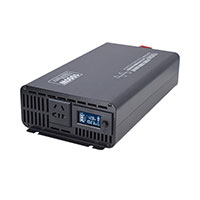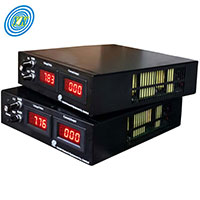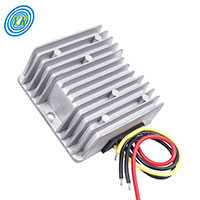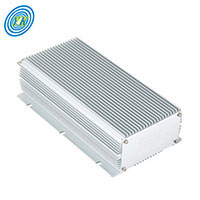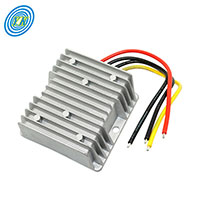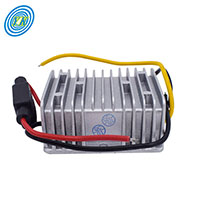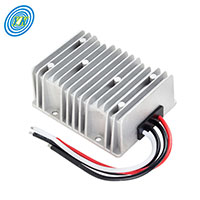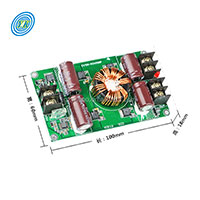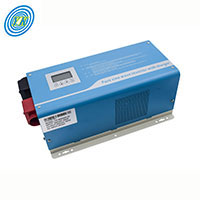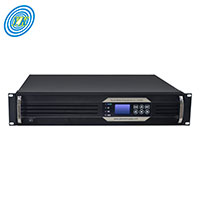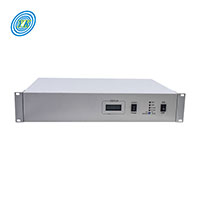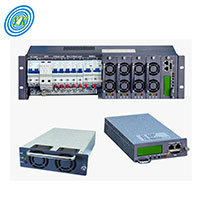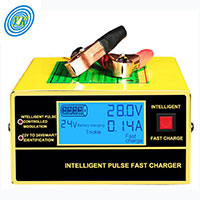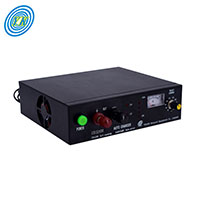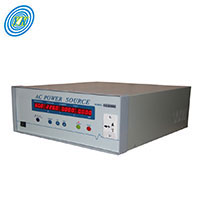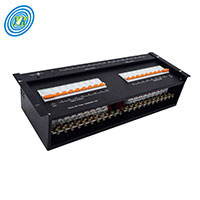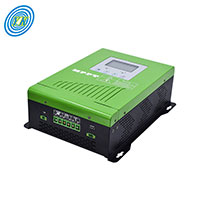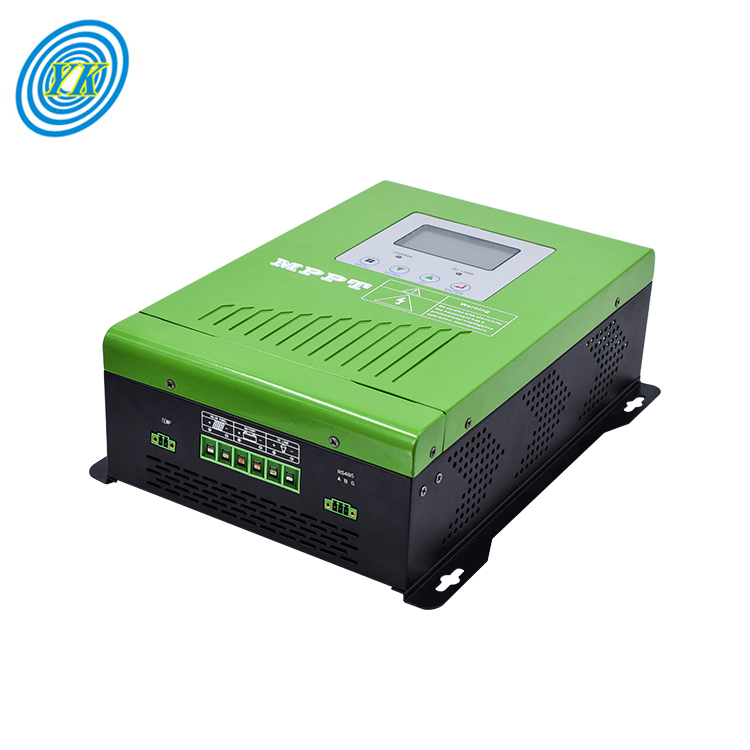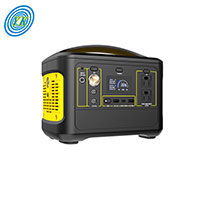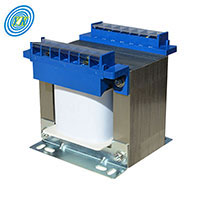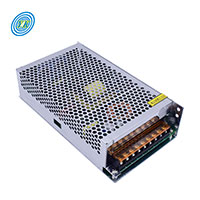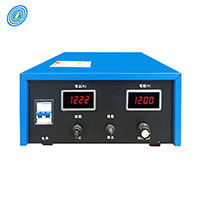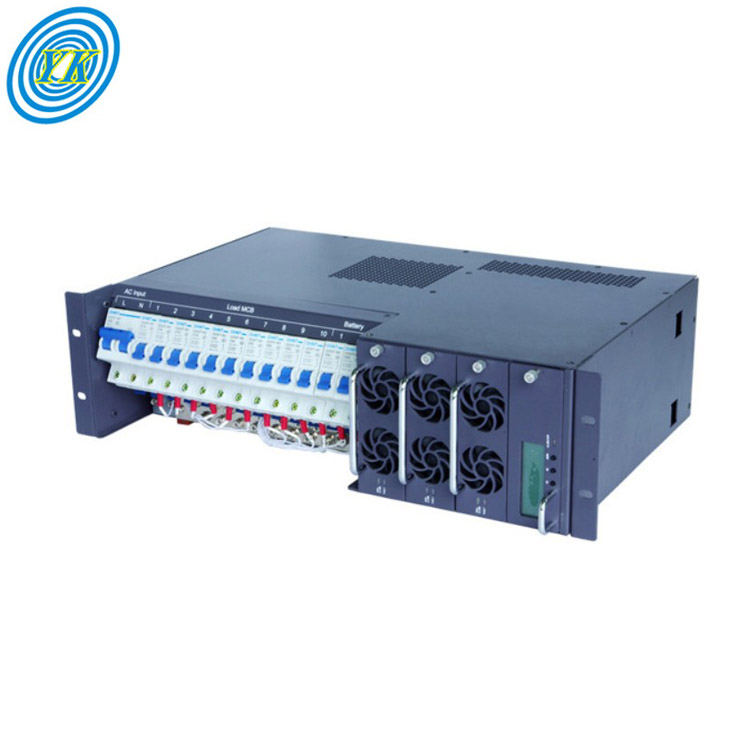
Rectifiers in Electric Vehicles: A Game Changer for the Automotive Industry
Click: 1862 Date: 09/12/2023 4::57::46 PM
Rectifiers in Electric Vehicles: A Game Changer for the Automotive IndustryThe advent of electric vehicles (EVs) has revolutionized the automotive industry, with rectifiers playing a pivotal role in this transformation. Rectifiers are crucial components that convert alternating current (AC) to direct current (DC), a critical process in the operation of EVs. This article explores the role of rectifiers in EVs and how they are shaping the future of the automotive industry.The Role of Rectifiers in Electric VehiclesIn electric vehicles, rectifiers are primarily used in the on-board charger (OBC), which is responsible for charging the vehicle's battery. The OBC takes AC input from the charging station and converts it to DC to charge the battery. The efficiency and reliability of this conversion process significantly impact the vehicle's performance and charging time, making the role of rectifiers crucial in EVs.Moreover, rectifiers are also used in the bidirectional power flow in Vehicle-to-Grid (V2G) operations. In V2G operations, not only is the vehicle's battery charged from the grid, but the battery can also supply power back to the grid when needed. This bidirectional power flow requires efficient rectification, making rectifiers an integral part of V2G systems.Impact on the Automotive IndustryThe use of rectifiers in EVs has several implications for the automotive industry. Firstly, it has led to advancements in charging technology. Fast charging, enabled by efficient rectifiers, has become a significant selling point for EVs.Secondly, the bidirectionality provided by rectifiers has paved the way for V2G technology, enabling EVs to serve as mobile power storage units. This feature has the potential to transform electric grids by providing a decentralized source of power, thereby reducing the load on power plants and promoting the use of renewable energy.Thirdly, the demand for efficient rectifiers has spurred innovation in the semiconductor industry, leading to the development of advanced power electronics components. These advancements are not only beneficial for EVs but also for various other applications, including renewable energy systems and industrial drives.Future TrendsAs the EV market continues to grow, the demand for efficient and reliable rectifiers is expected to rise. This demand is likely to drive further innovation in power electronics, leading to the development of more advanced and efficient rectifiers.Moreover, as V2G technology becomes more prevalent, the role of rectifiers in enabling bidirectional power flow will become increasingly important. This trend could lead to the development of new rectifier designs optimized for V2G operations.In conclusion, rectifiers play a crucial role in the operation of EVs and the growth of the EV market. As the automotive industry continues to evolve, the importance of rectifiers and power electronics is only set to increase.
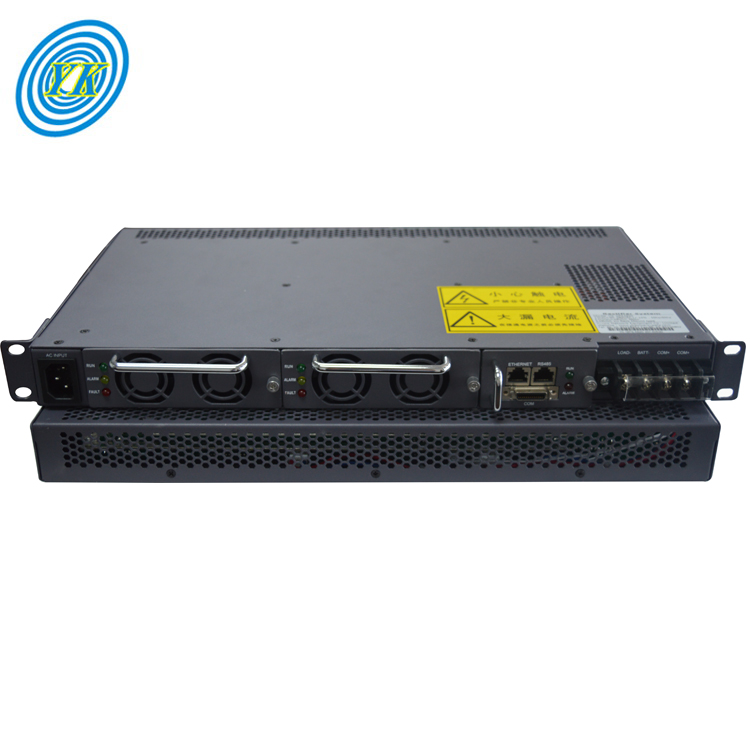
Harnessing the Power of Rectifiers in Renewable Energy Systems
Click: 2069 Date: 09/12/2023 4::53::52 PM
Harnessing the Power of Rectifiers in Renewable Energy SystemsRenewable energy systems are rapidly becoming a crucial part of the global energy landscape. With the increasing demand for clean and sustainable energy, the role of power electronics, particularly rectifiers, is becoming more significant. This article aims to explore how rectifiers are harnessed in renewable energy systems.Rectifiers: A Basic OverviewA rectifier is a device that converts alternating current (AC) to direct current (DC). This conversion is vital in many electronic devices and power systems, as DC is easier to store and is required by most electronic components to function.Rectifiers in Renewable Energy SystemsIn renewable energy systems, rectifiers play a vital role in power conversion. For instance, in wind energy systems, the power generated by the wind turbine is in the form of AC. However, most of the equipment used in the power grid operates on DC. Thus, rectifiers are used to convert the AC power into DC, making it suitable for use.Similarly, in solar power systems, the power generated by the solar panels is in DC form. However, the power grid operates on AC. Therefore, an inverter (which is essentially a type of rectifier) is used to convert the DC power into AC.Advancements in Rectification TechnologyWith the advancements in technology, high-efficiency rectifiers have emerged. These rectifiers are designed to minimize power loss during the conversion process, thus maximizing the efficiency of the renewable energy system. The use of such high-efficiency rectifiers can significantly improve the overall performance and cost-effectiveness of renewable energy systems.ConclusionIn conclusion, rectifiers play a pivotal role in renewable energy systems. They enable the conversion of power into a usable form, thus ensuring the efficient and effective operation of these systems. As the demand for renewable energy continues to grow, the importance of rectifiers and power electronics in general will only increase. Therefore, it is crucial to continue research and development in this area to further enhance the efficiency and performance of renewable energy systems.
Marine Inverter for Marine Applications
Click: 1999 Date: 09/12/2023 3::26::16 PM
Marine Inverter for Marine ApplicationsMarine inverters are a crucial component of marine electronics, providing the ability to power a variety of devices and systems onboard a boat or ship. They convert direct current (DC) power from a boat's battery or generator into alternating current (AC) that can be used to power appliances, lighting, and other electrical systems. Here's an in-depth look at the role of a marine inverter, its types and their applications.What is a Marine Inverter?A marine inverter takes DC power from your boat's battery bank and converts it into AC power. This allows you to use household items on your boat without being hooked up to shore power or facing the great expense of installing a generator.Types of Marine InvertersMarine inverters come in two main types: Modified Sine Wave (MSW) and True Sine Wave (TSW).Modified Sine Wave (MSW): This type of inverter produces a stepped wave, emulating the pure wave of AC power. MSW inverters can run most household gadgets, but they can have issues with electronic noise and may not run some items at their full power. They are not suitable for sensitive electronics, which can be damaged by the stepped wave.True Sine Wave (TSW): Also known as Pure Sine Wave (PSW), this type of inverter produces a pure wave, similar to a rolling wave on the ocean. TSW inverters are better at handling sensitive electronics and ensure that devices operate at their top performance level. They are usually more expensive than MSW inverters, but are necessary for charging computers, using printers, dimming lights, or watching flat-screen TVs onboard.Applications of Marine InvertersMarine inverters are used in a wide range of applications on boats and ships:Powering Appliances: Marine inverters can power a variety of appliances, from microwaves and fridges to televisions and computers.Lighting Systems: Marine inverters provide the AC power needed for the lighting systems on a boat or ship.Communication and Navigation Systems: Marine inverters can power communication and navigation systems, such as radios, GPS devices, and radar systems.Water Pumping Systems: In marine water-pumping applications, an inverter can be used to operate an asynchronous motor drive that powers the ship's seawater cooling pump.Battery Charging: Some marine inverters, such as the ProMariner True Power 2000PS, can also function as battery chargers, providing a dual function that can save space and money.When selecting a marine inverter, it's important to consider your specific needs, such as the types of devices you need to power, the total power requirement, and the sensitivity of the electronics. You should also consider the inverter's safety features, durability, and warranty
Aircraft Inverter for Aviation Electronics
Click: 1976 Date: 09/12/2023 2::42::45 PM
Aircraft Inverter for Aviation ElectronicsAn inverter is an electrical device that changes direct current (DC) to alternating current (AC). In aircraft, inverters are commonly used to supply AC power from DC sources such as batteries. The converted AC can be at any required voltage and frequency with the use of appropriate transformers, switching, and control circuits.Essential Component in AircraftPower converters, including inverters, are essential components in most aircraft concepts. They are used to convert from DC to AC power, or vice versa. These devices are an order of magnitude larger, lower weight, and higher efficiency compared to state-of-the-art aircraft.Advancements in Aircraft InvertersNASA is sponsoring or performing work to achieve power densities 2-3 times the state of the art for converters in the MW or larger class. This research sets the path to achieving the performance, functions, and safety needed for large electric and hybrid electric aircraft.Applications of Aircraft InvertersAircraft inverters have various applications, including in the High Lift Motor Controller (HLMC) and Generalized Intelligent Motor Control (GIMC) for the X-57 Aircraft. These systems use a 6-switch, DC to AC 3-phase inverter with a microcontroller-based control. The inverters are passively air-cooled, providing efficient thermal management.The High-Efficiency Electric Aircraft Thermal Research (HEATheR) Converter uses a 36-switch multi-level interleaved DC to AC 3-phase inverter with an FPGA control. This system uses a liquid cold plate cooling system for superior thermal management.Future of Aircraft InvertersThe future of aircraft inverters is promising with advancements in electric and hybrid electric propulsion systems. Companies like Rolls-Royce intend to become the leading supplier of these systems for aircraft, while Siemens continues to support the transition to electric aviation with its digital solutions portfolio.In conclusion, the aircraft inverter is a crucial component in aviation electronics, providing the necessary AC power from DC sources. With ongoing research and advancements in technology, the efficiency, power density, and performance of these inverters continue to improve, paving the way for the future of electric and hybrid electric aviation.
Multi-Level Inverter for High-Power Applications
Click: 1822 Date: 09/12/2023 2::09::12 PM
Multi-Level Inverter for High-Power ApplicationsMulti-level inverters are power electronic devices used in high-power applications to convert DC power into AC power. They provide higher voltage levels and improved waveform quality compared to traditional two-level inverters. This article will discuss the working principle, advantages, and applications of multi-level inverters in high-power systems.Working Principle: A multi-level inverter consists of multiple power electronic switches and capacitor voltage levels. The switches are controlled in such a way that they generate a stepped waveform with multiple voltage levels. By combining these voltage levels, a multi-level inverter can produce a sinusoidal output waveform with reduced harmonic distortion and improved voltage quality.Advantages of Multi-Level Inverters:Reduced Harmonic Distortion: Multi-level inverters can produce output waveforms with lower harmonic distortion compared to two-level inverters. This is achieved by generating voltage levels that approximate the desired sinusoidal waveform more closely.High Voltage Capability: Multi-level inverters can achieve higher voltage levels by stacking multiple voltage levels in series, allowing them to handle high-power applications efficiently.Improved Efficiency: The reduced harmonic distortion and improved waveform quality of multi-level inverters result in improved system efficiency and reduced power losses.Scalability: Multi-level inverters can be easily scaled up to handle higher power levels by adding more voltage levels and power electronic switches.Applications of Multi-Level Inverters:High-Power Drives: Multi-level inverters are commonly used in high-power motor drives, such as those used in industrial applications or electric traction systems. The improved waveform quality and reduced harmonic distortion make them suitable for driving high-power motors efficiently.Renewable Energy Systems: Multi-level inverters are used in renewable energy systems, such as wind turbines or solar power plants, to convert the DC power generated by these sources into AC power for grid integration. The high voltage capability and improved efficiency of multi-level inverters make them ideal for handling the power generated by these systems.Electric Vehicle Charging: Multi-level inverters can be used in high-power electric vehicle charging stations to convert the grid AC power into the required DC power for charging the electric vehicles. The high voltage capability of multi-level inverters enables faster charging rates and efficient power conversion.Multi-level inverters are key components in high-power applications, providing improved waveform quality, reduced harmonic distortion, and high voltage capability. They find applications in various fields, including high-power drives, renewable energy systems, and electric vehicle charging. The advancements in multi-level inverter technology continue to enhance the efficiency and performance of high-power systems.
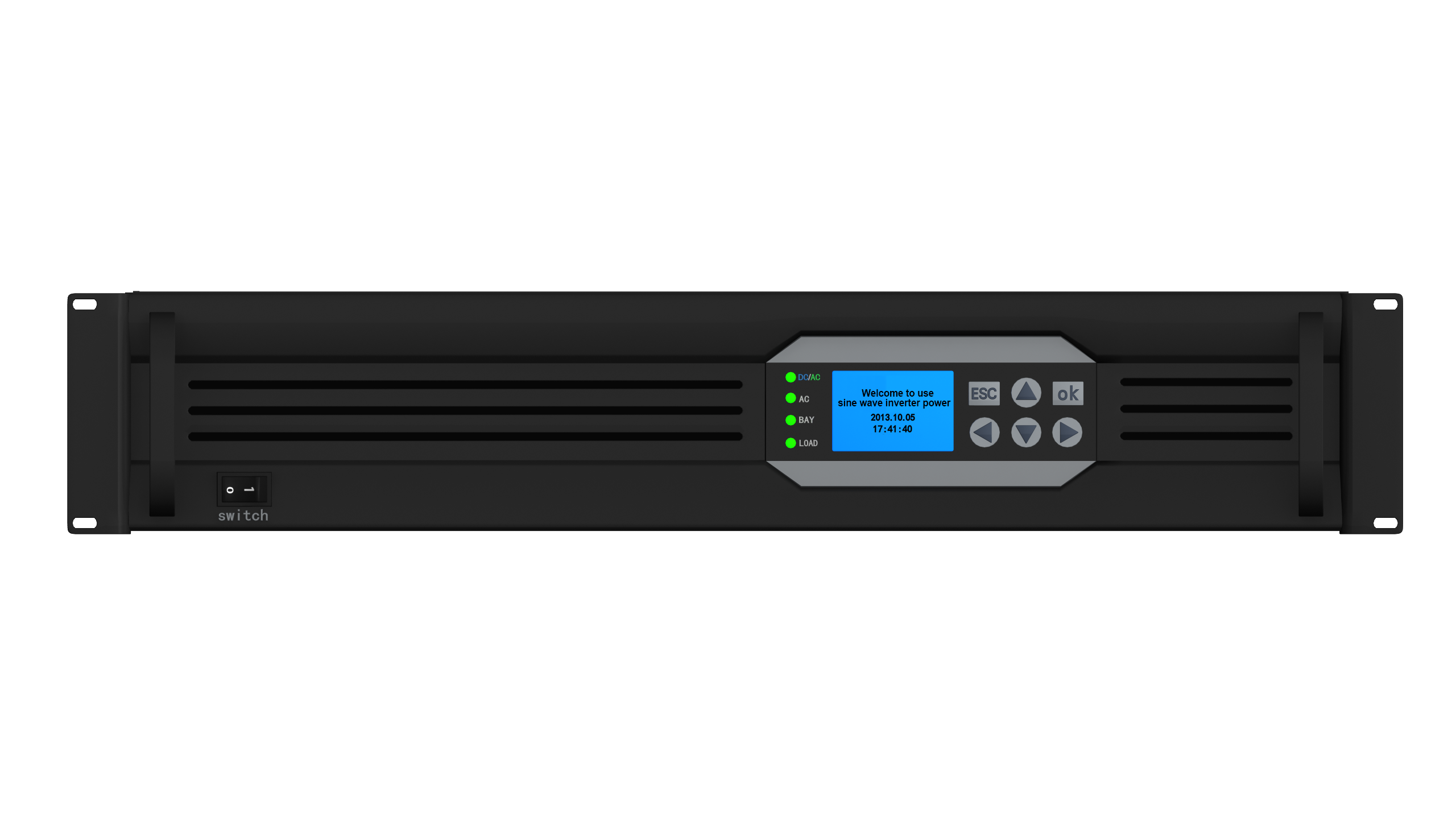
Variable Frequency Drive Inverter for Industrial Applications
Click: 1934 Date: 09/12/2023 11::22::18 AM
Variable Frequency Drive Inverter for Industrial ApplicationsA variable frequency drive (VFD), also known as an AC drive, AC variable speed drive, or variable voltage variable frequency drive, is a type of AC motor drive that controls the speed and torque of an electric motor by varying the frequency of the input electricity. VFDs are widely used in industrial applications to provide precise control over motor speed, resulting in improved energy efficiency and process control.The basic components of a VFD system include an AC motor, a main drive controller assembly, and a drive/operator interface. The AC motor used in a VFD system is typically a three-phase induction motor, although other types of motors can be used in specific situations. VFDs are designed to work with induction motors that are specifically designed for use with variable frequency drives, taking into account the elevated voltage stresses imposed by the VFD.VFDs use power electronics technology to convert the AC line input into an AC inverter output with variable frequency and voltage. The VFD controller consists of three main sub-systems: a rectifier bridge converter, a DC link, and an inverter. The rectifier bridge converter converts the AC line input into a DC voltage, which is then smoothed out by a capacitor in the DC link. The inverter, using active switching elements, converts the filtered DC voltage into a quasi-sinusoidal AC voltage output with variable frequency and voltage.There are various topologies of VFD inverters, including voltage-source inverter (VSI), pulse width modulation (PWM), and cascaded H-bridge inverter, among others. VSI drives are the most common type and provide higher power factor and lower harmonic distortion compared to other topologies.In industrial applications, VFDs offer several advantages:Energy Efficiency: By controlling the speed of the motor, VFDs can match the motor's speed to the required load, resulting in energy savings compared to fixed-speed operation.Process Control: VFDs allow for precise control of motor speed, torque, and acceleration, enabling better process control in various applications.Soft Start and Stop: VFDs provide smooth acceleration and deceleration of motors, reducing mechanical stress and extending motor lifespan.Reduced Maintenance: VFDs can help reduce wear and tear on motors and associated equipment, resulting in lower maintenance costs.Industrial applications that benefit from VFDs include:Fans and Blowers: VFDs can control the speed of fans and blowers to match the required airflow, resulting in energy savings and improved process control.Pumps: VFDs can adjust the speed of pumps to match the required flow rate, reducing energy consumption and providing precise control over fluid handling processes.Conveyors: VFDs can control the speed of conveyors, allowing for efficient material handling and reducing energy consumption during low-demand periods.Machine Tools: VFDs enable precise control over the speed and torque of machine tools, improving machining accuracy and reducing energy consumption.In conclusion, a variable frequency drive (VFD) inverter is a crucial component in industrial applications that require precise control over motor speed and torque. By varying the frequency and voltage of the input electricity, VFDs provide energy efficiency, improved process control, and reduced maintenance costs. They find applications in various industries, including fans and blowers, pumps, conveyors, and machine tools.
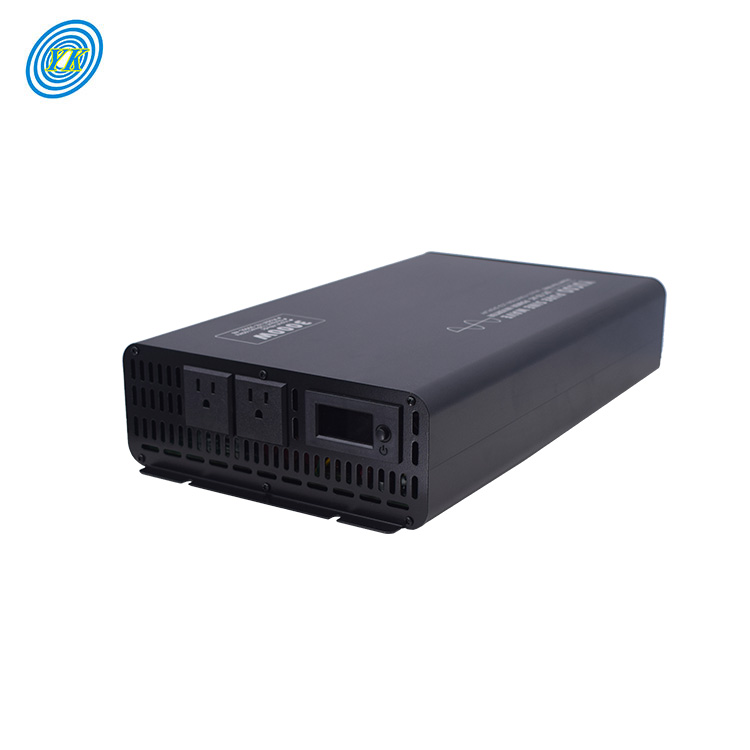
Motor Drive Inverter for Electric Vehicles
Click: 1260 Date: 09/12/2023 10::35::40 AM
Motor Drive Inverter for Electric VehiclesElectric vehicles (EVs) are gaining popularity due to their environmental benefits and energy efficiency. The motor drive inverter is a crucial component in the electric drive train system of EVs. It converts the direct current (DC) from the battery into alternating current (AC) to drive the electric motor. This article will explore the importance of motor drive inverters in electric vehicles and discuss their key features and control strategies.Motor Drive Inverter Functionality: The motor drive inverter in an electric vehicle is responsible for controlling the electric motor and determining the vehicle's driving behavior. By converting the DC power from the battery into AC power, the inverter enables precise control of the motor's speed and torque, ensuring efficient and smooth operation of the vehicle. The main inverter is the primary component that performs this function.Key Features of Motor Drive Inverters: Motor drive inverters for electric vehicles possess several important features that contribute to their efficiency and performance. These features include:High torque density: Motor drive inverters are designed to provide high torque output with compact size and weight, allowing for improved vehicle dynamics.Reliability and durability: Inverters must meet stringent reliability and durability requirements to ensure the safety and longevity of the vehicle.High efficiency: Inverters strive for high efficiency within the operating spectrum to maximize energy economy and optimize users' capital investment.Power factor control: Inverters employ various control strategies, such as unit power factor control, to achieve a power factor of 1, thereby utilizing the inverter capacity efficiently.Control Strategies for Motor Drive Inverters: Motor drive inverters utilize different control strategies to achieve optimal performance and efficiency. Some common control strategies include:Space Vector Pulse Width Modulation (SVPWM): SVPWM is a popular pulse width modulation technique used in motor drive inverters. It provides precise control of motor voltage and current, improving overall motor performance.Sinusoidal Pulse Width Modulation (SPWM): SPWM is another widely used modulation technique that generates a sinusoidal waveform to control the motor's speed and torque.Maximum Torque per Ampere (MTPA) control: MTPA control aims to achieve maximum torque production per ampere of current supplied to the motor, enhancing overall motor efficiency.Power factor control: Inverters employ control strategies to maintain a power factor of 1, minimizing reactive power output and maximizing motor torque capacity.Motor drive inverters play a crucial role in the electric drive train systems of electric vehicles. They convert DC power from the battery into AC power to control the speed and torque of the electric motor. Motor drive inverters are designed with features such as high torque density, reliability, durability, and high efficiency. They employ various control strategies, including pulse width modulation techniques and power factor control, to optimize motor performance and energy efficiency. As electric vehicles continue to evolve, motor drive inverters will remain essential components in achieving sustainable and efficient transportation.
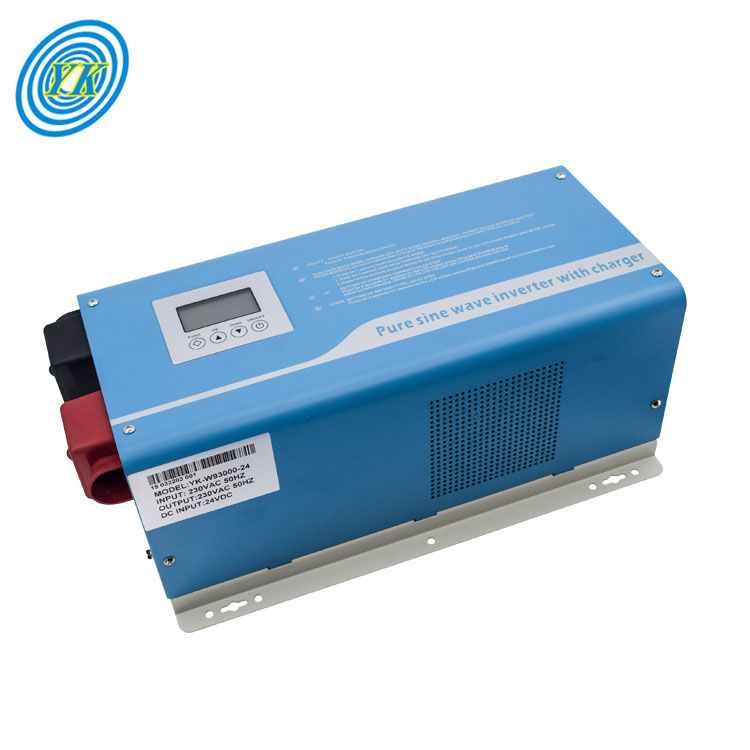
Battery Inverter for Energy Storage Systems
Click: 1256 Date: 09/12/2023 09::44::56 AM
Battery Inverter for Energy Storage SystemsBattery Energy Storage Systems (BESS) play a crucial role in storing and distributing energy in the form of electricity. They consist of one or more batteries that store electrical energy for use at a later time. Battery inverters are an essential component of BESS as they convert the DC power from the batteries into AC power that can be used in homes, businesses, or fed back into the grid.Advantages of using a BESS and Battery Inverters:Reduced Costs: BESS allows for the storage of excess energy generated by renewable sources, such as solar or wind power. This stored energy can be used during periods of high demand or when renewable sources are not generating enough power. By utilizing stored energy, BESS can reduce costs by avoiding the need for expensive peak power generation or grid upgrades.Improved Power Quality: Battery inverters help smooth out voltage fluctuations and provide a stable power supply. They can regulate the flow of electricity to and from the grid, ensuring a consistent and reliable energy supply.Backup Power: During power outages or extreme weather events, BESS with battery inverters can provide backup power. This is especially beneficial for critical applications where uninterrupted power supply is essential, such as hospitals, data centers, or telecommunications infrastructure.Peak Shaving: BESS can reduce peak electricity demand by using stored energy to meet part of the demand. This helps to lower overall electricity costs and reduces the need for new power plants or grid upgrades.Microgrids: Battery energy storage systems can be integrated into microgrids, which are small, independent power systems that can operate connected or disconnected from the main grid. BESS with battery inverters can provide backup power during outages and help stabilize the grid by providing energy during peak demand periods.Technologies and Components of BESS:Inverters: Inverters are devices that transform direct current (DC) into alternating current (AC), which is the type of electricity used in homes and businesses. Battery inverters play a crucial role in converting the DC power from batteries into usable AC power.Control Components: Control components manage the charging and discharging of the batteries and regulate the flow of electricity to and from the grid. They ensure efficient operation and optimal utilization of stored energy.Multiple Battery Modules: BESS consists of multiple battery modules, which are composed of multiple batteries that work together to store and release energy. The use of multiple batteries allows for scalability and flexibility in energy storage capacity.Flow Batteries: Flow batteries are a newer type of BESS that offer a longer lifespan compared to traditional lead-acid or lithium-ion batteries. They store energy in an electrolyte solution, which can be redirected to different parts of the battery as needed.Flywheels: Flywheels are another type of energy storage system used in BESS. They store and release electricity using kinetic energy. Flywheels are typically used for short-term storage applications, such as load leveling or backup power generation.Battery inverters and BESS are enabling the adoption of renewable energy sources and contributing to the development of a more sustainable and resilient energy infrastructure. They provide numerous benefits, including cost reduction, improved power quality, backup power supply, and grid stability. With advancements in technology and increasing demand for clean energy solutions, the role of battery inverters in energy storage systems is becoming increasingly important.
